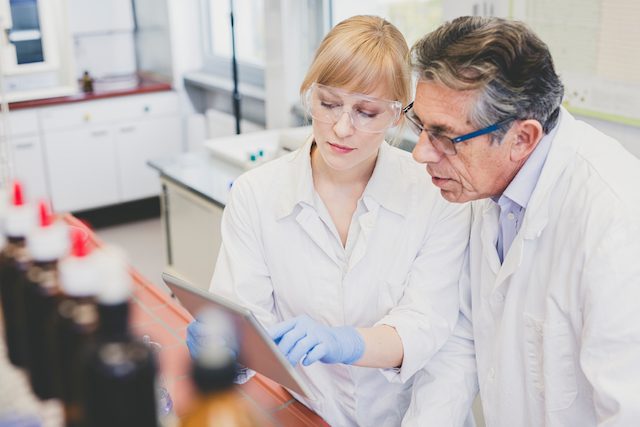What is ALS?
Amyotrophic Lateral Sclerosis (ALS or Lou Gehrig’s disease) remains a terrible disease for patients, as well as their families and so many others whose lives they touch. ALS is caused by an irreversible degeneration of motor neurons, which are the nerve cells in the spinal cord and brain that control the muscles needed for breathing, walking, and swallowing, among other daily activities. It is estimated that at any given time there are about 15,000 ALS patients in the United States.
Who is most likely to get ALS?
The risk for ALS increases with age, and is most common between the ages of 40 and mid-60s. Before the age of 65, slightly more men than women develop ALS.
How is ALS diagnosed?
ALS is primarily diagnosed based on symptoms observed by a physician during physical examination, along with a review of the patient’s medical history and tests to rule out other diseases. A neurologic examination at regular intervals can assess whether symptoms such as muscle weakness, muscle wasting, and spasticity are getting worse.
What are the most common early symptoms of ALS?
Early symptoms of ALS include:
- Muscle twitches in the arm, leg, shoulder, or tongue
- Muscle cramps
- Tight and stiff muscles (spasticity)
- Muscle weakness affecting an arm, a leg, the neck, or diaphragm
- Slurred and nasal speech
- Difficulty chewing or swallowing
Do early ALS symptoms come and go?
ALS symptoms are progressive, meaning symptoms get worse over time and often develop very quickly. That said there are some cases in which symptoms, such as difficulty swallowing, can get better for a period of time.
How long can you live with ALS?
ALS patients typically survive 3-5 years after diagnosis and during their illness they will become progressively paralyzed, losing speech and independence.
What percentage of people die of ALS?
ALS remains a fatal disease; patients typically lose their battle in 3-5 years. ALS affects as many as 30,000 people in the United States, with 5,000 new cases diagnosed each year.
How is ALS different from other neurological diseases?
ALS is a motor neuron disease, a group of progressive neurological disorders that destroy motor neurons, the cells that control skeletal muscle activity such as walking, breathing, speaking, and swallowing. This group of diseases includes ALS, as well as primary lateral sclerosis, and progressive muscular atrophy, among others.
Does ALS progress rapidly?
Gradually all voluntary muscles are affected by ALS, and individuals lose their strength and the ability to speak, eat, move, and even breath. Most people with ALS die from respiratory failure, usually within 3 to 5 years from when the symptoms first appear.
How long does each stage of ALS last?
In the early stages, patients often experience muscle weakness, involuntary twitching, weakness of the limbs, and slurred speech. It progresses relatively quickly, and there is no known cure. Most patients progress to the end stages of ALS within three to five years from diagnosis, and the disease is eventually terminal.
What is the difference between familial ALS and sporadic ALS?
Sporadic ALS is the most common form of the disease, accounting for around 90% to 95% of all cases. It is diagnosed in patients who do not have a family history of ALS. Genetic factors can slightly increase the risk of developing sporadic ALS, but they do not directly cause the disease itself. Familial, or inherited, ALS runs in families and accounts for the remaining 5% to 10% of cases. It can be caused by one of several mutations that are passed from parents to their children.
Can ALS stop regressing?
Currently, there is no cure for ALS and no effective treatment to halt or reverse the progression of the disease. ALS belongs to a wider group of disorders known as motor neuron diseases, which are caused by gradual deterioration (degeneration) and death of motor neurons.
How do people get ALS?
The cause of sporadic ALS is not known, and scientists do not yet know why ALS strikes some people and not others. However, scientific evidence suggests that both genetics and environment play a role in motor neuron degeneration and the development of ALS.



